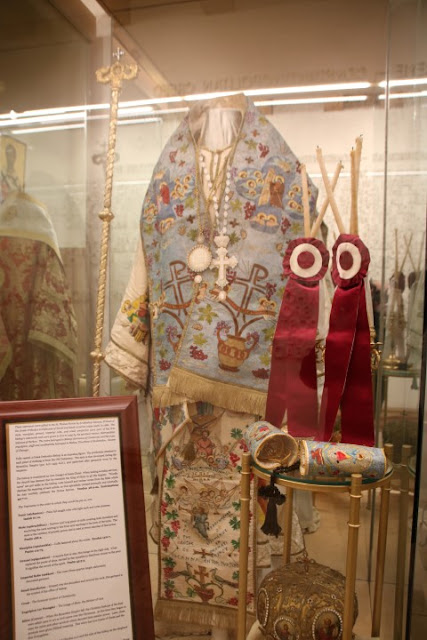December 2016 - St. Augustine FL
This hidden gem was found in the heart of the historic district the St. Photios Greek Orthodox National Shrine, an institution of the Greek Orthodox Archdiocese of America, is dedicated to the first colony of Greek people who came to America in 1768. The Shrine consists of exhibits depicting the life of early Greeks in America and the development of the Greek Orthodox Church in America, and the St. Photios Chapel.
I was curious who Photios was, patron saint of photography??? Just kidding...
So, of course, one must head to Wikipedia.
Photios I c. 810 – c. 893), also spelled Photius or Fotios, was the Ecumenical Patriarch of Constantinople from 858 to 867 and from 877 to 886; He is recognized in the Eastern Orthodox Church as St. Photios the Great.
Photios is widely regarded as the most powerful and influential church leader of Constantinople subsequent to John Chrysostom's archbishopric in the late fourth century. He is also viewed as the most important intellectual of his time – "the leading light of the ninth-century renaissance". He was a central figure in both the conversion of the Slavs to Christianity and the Photian schism, and is considered "[t]he great systematic compiler of the Eastern Church, who occupies a similar position to that of Gratian in the West," and whose "collection in two parts...formed and still forms the classic source of ancient Church Law for the Greek Church."
Photios I c. 810 – c. 893), also spelled Photius or Fotios, was the Ecumenical Patriarch of Constantinople from 858 to 867 and from 877 to 886; He is recognized in the Eastern Orthodox Church as St. Photios the Great.
Photios is widely regarded as the most powerful and influential church leader of Constantinople subsequent to John Chrysostom's archbishopric in the late fourth century. He is also viewed as the most important intellectual of his time – "the leading light of the ninth-century renaissance". He was a central figure in both the conversion of the Slavs to Christianity and the Photian schism, and is considered "[t]he great systematic compiler of the Eastern Church, who occupies a similar position to that of Gratian in the West," and whose "collection in two parts...formed and still forms the classic source of ancient Church Law for the Greek Church."




















...lovely icons.
ReplyDeleteBeautiful inside!
ReplyDeleteStunning photos
ReplyDeleteAmazing paintings there.Happy Boxing Day from Coombe Mill #MysundayPhoto
ReplyDeleteAmazing, thank you for showing me this!
ReplyDeleteGreat artwork
ReplyDeleteI wish you a happy and prosperous New Year 2017!
ReplyDelete